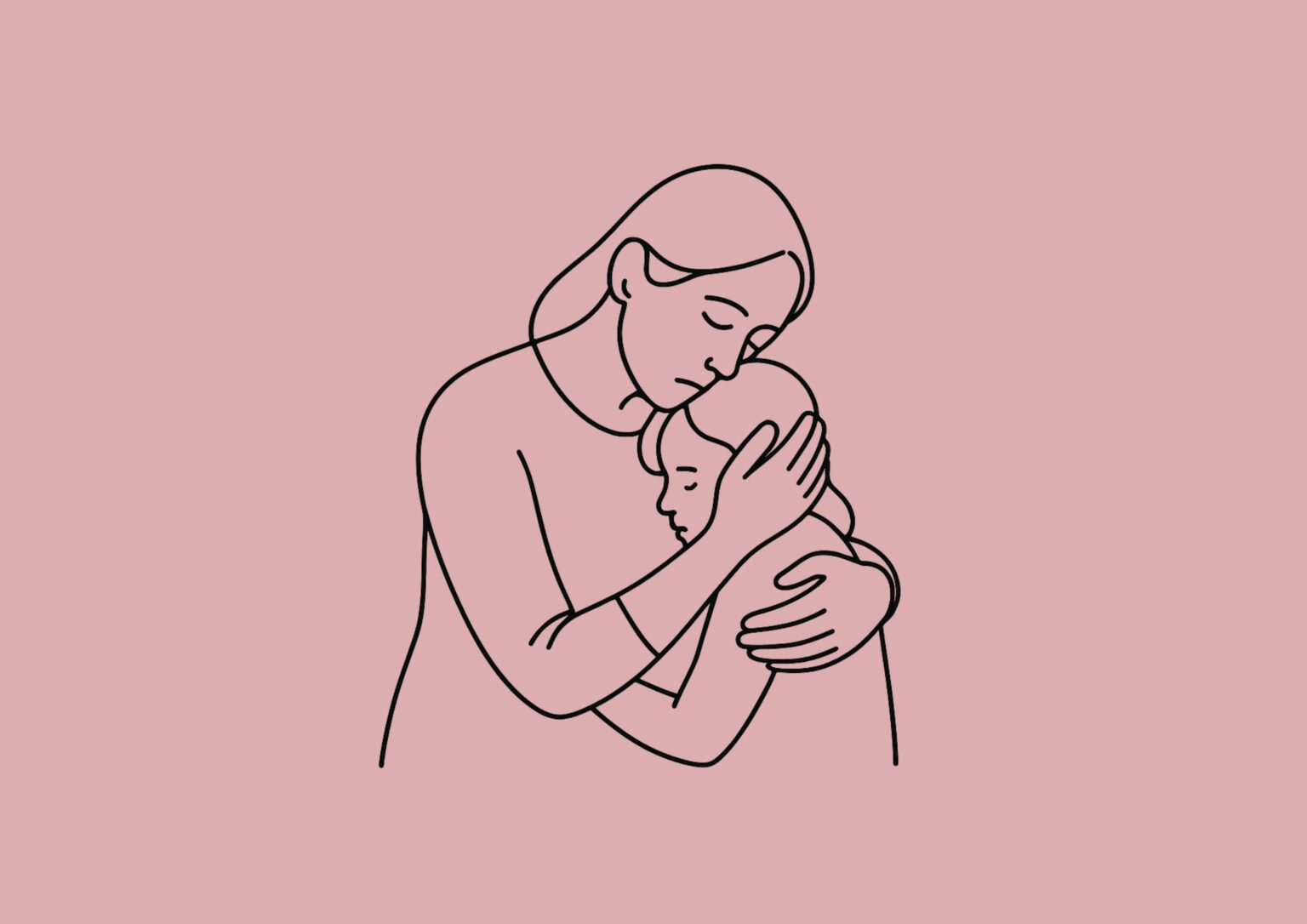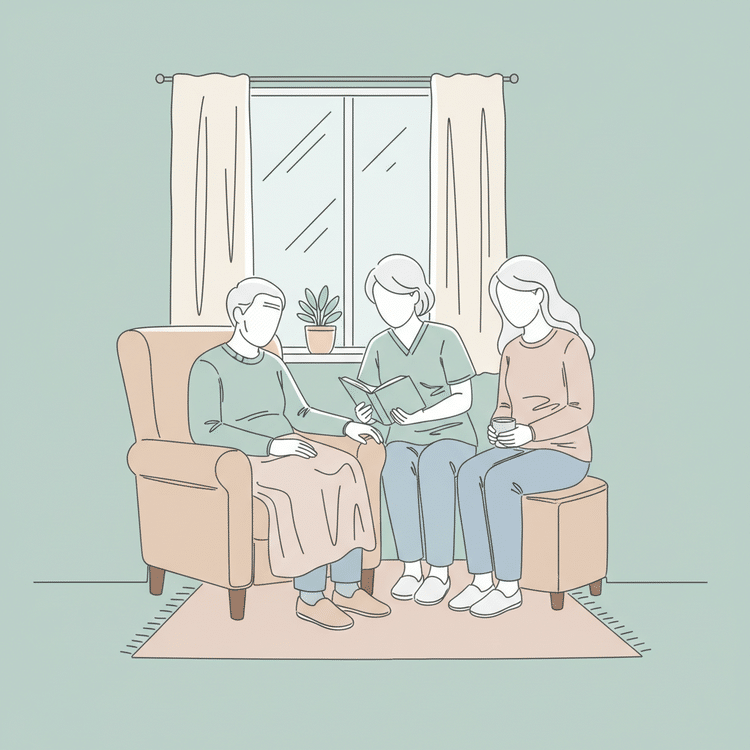Grief is one of life’s most challenging experiences, yet it’s a natural and necessary part of healing after loss. Whether you’re anticipating the death of a loved one or have recently experienced a loss, understanding the grief process can help you navigate this difficult journey with greater awareness and self-compassion.
Understanding the Grief Process
The five stages of grief were first introduced by psychiatrist Elisabeth Kübler-Ross in 1969. Originally developed to describe the emotional journey of terminally ill patients, these stages have since been widely applied to help understand how people process various types of loss.
Important to remember:
- Grief is highly individual and non-linear
- Not everyone experiences all five stages
- Stages don’t necessarily occur in order—people may revisit stages or skip them entirely
- Some people may experience multiple stages simultaneously
The Five Stages Explained
1. Denial: “This Can’t Be Happening”
Denial is often the first response to loss or impending loss. It serves as a natural defense mechanism, helping us cope with overwhelming emotions by temporarily blocking out reality.
What denial might look like:
- Refusing to accept a terminal diagnosis
- Continuing to set a place at the table for someone who has died
- Avoiding discussions about death or funeral planning
- Feeling numb or disconnected from reality
How families can cope:
- Allow yourself time to process difficult news
- Don’t force acceptance too quickly
- Seek support from trusted friends, family, or counselors
- Remember that denial is a normal protective response
2. Anger: “Why Is This Happening?”
As the reality of loss begins to set in, denial often gives way to anger. This stage can be particularly challenging because anger may be directed at various targets—doctors, family members, God, or even the person who is dying or has died.
What anger might look like:
- Frustration with medical professionals
- Resentment toward family members who “don’t understand”
- Feeling angry at the dying person for “leaving”
- Rage at the unfairness of the situation
How families can cope:
- Recognize that anger is a normal part of grief
- Find healthy outlets for anger (exercise, journaling, talking to a counselor)
- Avoid making important decisions while feeling intense anger
- Practice patience with yourself and family members
3. Bargaining: “If Only…”
During the bargaining stage, people often try to negotiate their way out of the loss. This might involve making deals with God, promising lifestyle changes, or searching desperately for alternative treatments.
What bargaining might look like:
- “If only we try this new treatment, everything will be okay”
- Making promises to change behaviors in exchange for more time
- Constantly seeking second opinions or miracle cures
- Playing “what if” scenarios repeatedly
How families can cope:
- Acknowledge these thoughts without judgment
- Focus on what you can control rather than what you cannot
- Consider discussing feelings with a spiritual advisor or counselor
- Channel energy into meaningful activities with your loved one
4. Depression: “What’s the Point?”
Depression in grief often involves profound sadness and a sense of emptiness. This stage reflects the true magnitude of the loss and can feel overwhelming. It’s important to distinguish between normal grief-related depression and clinical depression that may require professional treatment.
What depression might look like:
- Persistent sadness and crying
- Loss of interest in activities you once enjoyed
- Difficulty sleeping or sleeping too much
- Feeling hopeless about the future
- Social withdrawal
How families can cope:
- Allow yourself to feel sad—it’s a necessary part of healing
- Maintain basic self-care routines
- Stay connected with supportive people
- Consider professional counseling if depression feels overwhelming
- Remember that this stage will not last forever
5. Acceptance: “I Understand What’s Happening”
Acceptance doesn’t mean you’re “okay” with the loss or that you’ve “gotten over it.” Instead, it represents a peaceful acknowledgment of reality and the beginning of emotional healing.
What acceptance might look like:
- Making peace with the situation
- Finding meaning in the experience
- Planning for the future while honoring the past
- Feeling ready to create new memories and relationships
How families can cope:
- Celebrate this milestone in your healing journey
- Continue honoring your loved one’s memory
- Consider how your experience might help others
- Remain patient with family members who may be at different stages
Understanding Anticipatory Grief
Many families caring for someone with a terminal illness experience anticipatory grief—grieving that begins before death occurs. This type of grief can include all five stages and presents unique challenges:
- Feeling guilty for “giving up hope”
- Exhaustion from prolonged caregiving and emotional stress
- Difficulty balancing hope with realistic expectations
- Conflicting emotions about wishing for an end to suffering
Remember: Anticipatory grief is normal and doesn’t mean you love your family member any less.
When Grief Becomes Complicated
While grief is a natural process, sometimes it can become “complicated grief” or “prolonged grief disorder,” requiring professional support. Seek immediate help if you experience:
- Intense grief that doesn’t improve after several months
- Inability to function in daily life for extended periods
- Persistent thoughts of suicide or self-harm
- Substance abuse as a coping mechanism
- Complete avoidance of all reminders of the loss
- Extreme social isolation lasting months
If you’re experiencing thoughts of self-harm, call the 988 Suicide & Crisis Lifeline immediately at 988.
Supporting Each Other Through Grief
Families often struggle because members may be at different stages of grief simultaneously. Here are ways to support each other:
Practice patience: Remember that everyone grieves differently and at their own pace.
Communicate openly: Share your feelings and listen without judgment.
Respect differences: Some family members may want to talk constantly, while others prefer privacy.
Maintain traditions: Consider which traditions to continue and which might be too difficult.
Create new rituals: Develop meaningful ways to honor your loved one’s memory together.
Professional Grief Support Resources
At ViaQuest Hospice, we understand that grief doesn’t end when hospice care ends. Our comprehensive bereavement support includes:
- Individual grief counseling sessions
- Family therapy and group support
- Support groups for different types of loss (spouse, parent, child)
- Memorial services and remembrance activities
- Educational resources about the grief process
Our bereavement team provides support for at least 13 months following a loss, helping families navigate their unique grief journey with compassion and expertise.
Additional USA-based grief support resources:
- GriefShare: National network of grief recovery support groups (griefshare.org)
- The Compassionate Friends: Support for families who have lost a child (compassionatefriends.org)
- National Suicide Prevention Lifeline: 24/7 crisis support at 988
- Psychology Today Grief Counselors: Find local grief therapists (psychologytoday.com)
Finding Hope in Healing
While grief can feel overwhelming, it’s important to remember that healing is possible. The pain of loss may never completely disappear, but it will change and become more manageable over time. Many people find that their grief journey ultimately leads to:
- Deeper appreciation for life and relationships
- Increased empathy and compassion for others
- Spiritual growth and renewed sense of purpose
- Stronger family bonds forged through shared experience
Creating Your Own Grief Journey
Remember that your grief is unique to you. While the five stages provide a helpful framework, your experience may look entirely different—and that’s perfectly normal. Grief is not linear and there’s no set timeline. Some people experience grief as waves that come and go, while others describe it as a constant companion that gradually becomes gentler.Allow yourself to grieve in your own way and in your own time. There’s no “right” way to grieve, and there’s no timeline you must follow.





